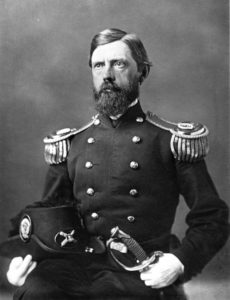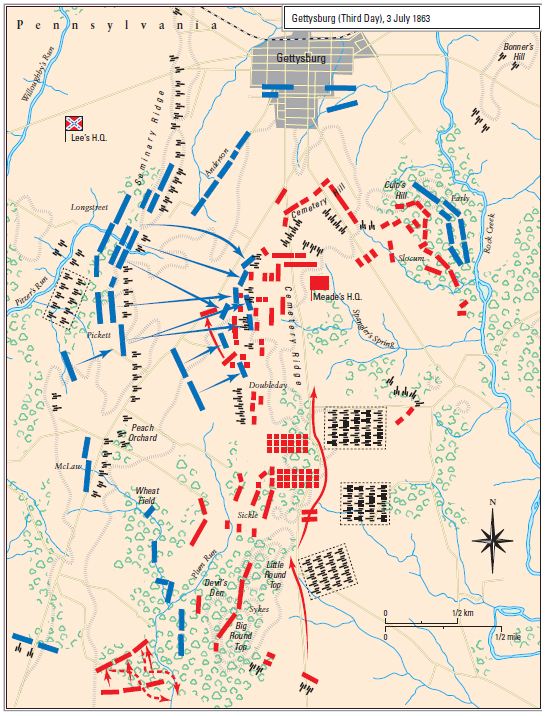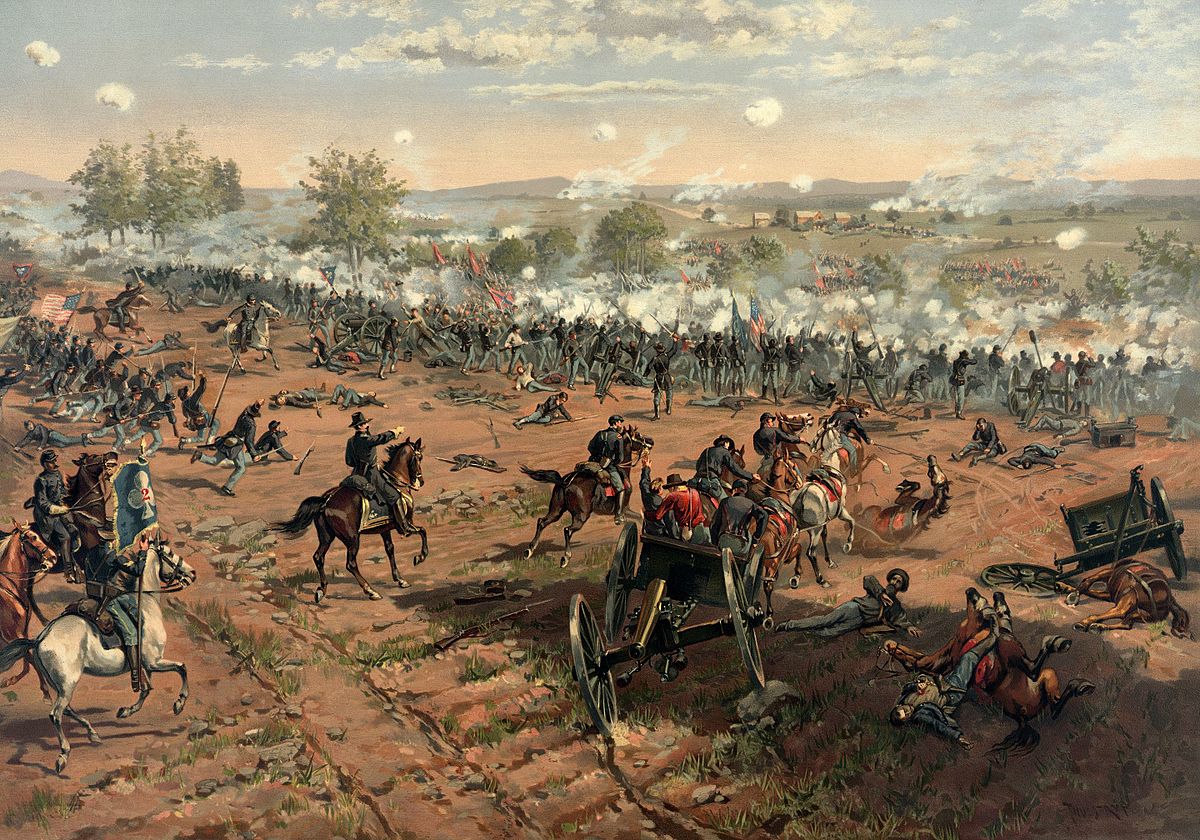Editor: Michael Spilling and Consultant Editor: Chris McNab
On 30 June, Meade advised MGen John Reynolds that it seemed Lee would concentrate his forces near the small town of Gettysburg. Reynolds thus sent BGen John Buford and two cavalry brigades towards Gettysburg to find Lee.

Building on the momentum of his victory at Chancellorsville, Gen Robert E. Lee launched a second invasion of Northern territory. In the meantime, President Abraham Lincoln replaced MGen Joseph Hooker with MGen George Meade on 28 June. Lee advanced north into Pennsylvania virtually unopposed, but because MGen Jeb Stuart, Lee’s eyes and ears, had gone on an ill-advised raid around the Federal army, Lee was ignorant of the Federal dispositions. By 30 June, Lee had gathered most of his army in the area of Chambersburg, Cashtown and Heidlersburg. Meade had been pushing his army north, staying to the east of Lee’s army in order to protect Washington and Baltimore.
Major General Oliver Howard occupies Cemetery Hill for the Federals
On 1 July, Buford encountered a Confederate brigade that had marched to Gettysburg in search of some shoes reported to be there. A meeting engagement ensued in which both Lee and Meade competed to rush forces to the location. Because the Confederates were closer, Lee was able to gain the upper hand. However, MGen Oliver Howard wisely occupied Cemetery Hill for the Federals. This hill on the north end of Cemetery Ridge dominated the approaches to Gettysburg and would be key to any defensive effort. Receiving only a discretionary order from Lee, LGen Richard Ewell did not attack the position, giving the Federals a critical piece of terrain.
Lee wanted to press the advantage he had gained in the first day’s fighting, and, over the objections of LGen James Longstreet, who favoured assuming a strong defensive position, Lee ordered an attack against the left of the Federal line in the vicinity of Little and Big Round Tops on 2 July. Longstreet did not attack until 16:30 and by then Meade had rushed defenders to Little Round Top. After hard fighting, the Federals retained the key hill and the second day of the battle ended in a stalemate.

Lee’s big mistake
Having struck the Federal right the first day and the left the second, Lee now resolved to attack the Federal center on 3 July. At 13:00, the Confederates initiated a 172-gun pre-assault bombardment, but most of the rounds sailed over the heads of the Federal defenders on Cemetery Ridge. With the Federal line still largely intact, MGen George Pickett began his charge at about 13:45. His men met a devastating fire from the Federal artillery, and gaps soon appeared in the Confederate line. BGen Lewis Armistead led his men to the ‘High Water Mark of the Confederacy’. But MGen Winfield Scott Hancock repulsed the attack, and the scattered remnants of ‘Pickett’s Charge’ staggered back across the field. The attack had caused 54 per cent losses to the Confederates. As Pickett’s beaten men fell back, Lee said, “It’s all my fault.”
A close run thing
Although Meade had defeated Lee, it had been a close call, and Meade was in no mood to press his victory. Both sides had been badly hurt, with Lee suffering 28,063 losses and Meade 23,049. In spite of urgings by President Lincoln, Meade allowed Lee to withdraw back into Virginia, ending his second invasion of the North. The defeat cost Lee manpower he could ill-afford to lose and ended his ability to launch further offensives.

Dr. Chris McNab is the editor of AMERICAN BATTLES & CAMPAIGNS: A Chronicle, from 1622-Present and is an experienced specialist in wilderness and urban survival techniques. He has published over 20 books including: How to Survive Anything, Anywhere — an encyclopedia of military and civilian survival techniques for all environments — Special Forces Endurance Techniques, First Aid Survival Manual, and The Handbook of Urban Survival. In his home country of Wales, UK, Chris provides instruction on wilderness hunting techniques and he is also an experienced martial arts instructor.
